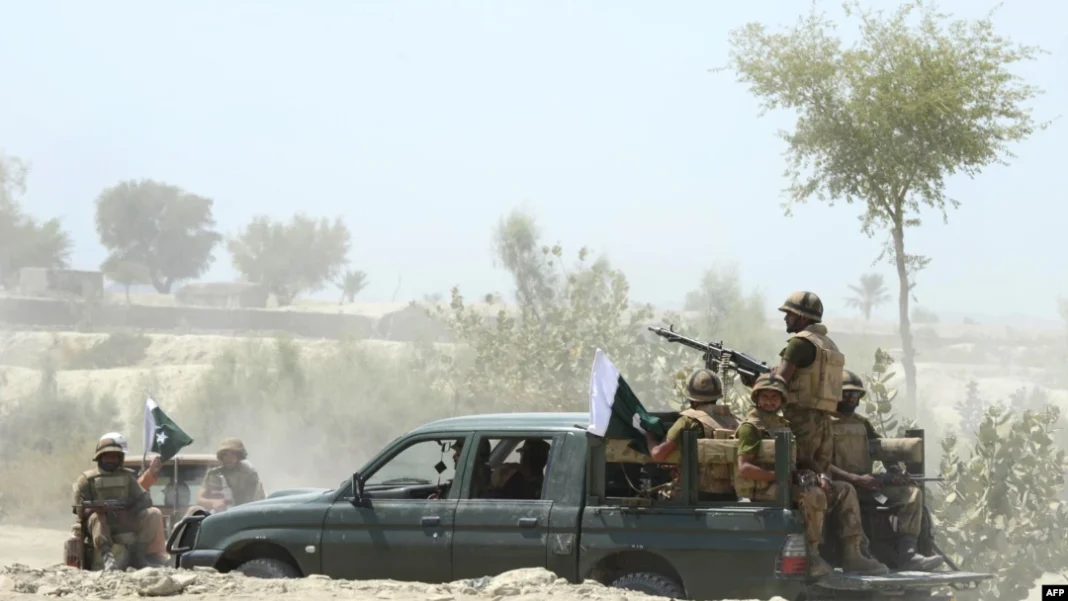Insurgency in Khyber Pakhtunkhwa, a province in northwest Pakistan, has been a major security challenge for many years. The province has been the site of an ongoing conflict between the Pakistani military and various militant groups, including the Tehreek-e-Taliban Pakistan (TTP) and the Balochistan Liberation Army (BLA). There are a number of factors that have contributed to the rising insurgency in Khyber Pakhtunkhwa including political instability, economic inequality, ethnic disparity, sectarian discrimination and resultantly social-cultural tensions. Many observers have rightly argued that the Pakistan Army has played a role in fuelling the insurgency in the region.
Pakistan’s north-western region – Khyber Pakhtunkhwa – is mired in frequent violence, killings and assassinations by myriad terrorist groups. Among these terrorist groups, the most ruthless and brutal is the TTP. The TTP, also known as the Pakistani Taliban, was formed in 2007 as an umbrella organization for various militant groups operating in the Federally Administered Tribal Areas (FATA) of Pakistan. The insurgency by TTP has led to thousands of innocent citizens being killed and millions displaced in the region. In the latest episode this November, TTP killed eight law enforcement personnel which has intensified the tensions that was already brewing in the region.
The TTP has deep historical ties with the Afghan Taliban, al-Qaeda and the Islamic State in Khorasan Province (ISKP). It is a by-product of al-Qaeda’s jihadi politics in Afghanistan and Pakistan after 9/11. ISKP itself is born out of the disaffected members of the TTP. The TTP is the largest militant organisation fighting the Pakistani state and aims to establish an Islamic State in Pakistan based on its own interpretation of sharia. The TTP’s violence peaked in 2014 when it attacked a school in Peshawar that killed more than 140 people, mostly children. It further attacked the Pakistani military establishment leading to a number of casualties. Pakistan retaliated with air raids on TTP positions, however, it backfired with over 45 people being killed, mostly innocent civilians.
Such a gory picture raises an important question – how come such a powerful militia organisation spawned inside the Pakistani territory? The answer is well known. It is the result of the Pakistani army’s own doing. Pakistan’s army and notorious spy agency ISI trained jihadi militias to fight in Afghanistan and Kashmir. In Afghanistan, Pakistan hoped to gain strategic depth with the help of these militants, and in Kashmir, it wanted to spread terror and violence to weaken the Indian government and military as well as cause political and social unrest. At the time of the US invasion of Afghanistan after 9/11, it is these jihadists who fought on behalf of the Pakistani state that turned against it for the Pakistani government’s support to the USA’s “global war on terror.”
The TTP has been used as a proxy force to advance the strategic interests of the Pakistan Army in Afghanistan and India. The TTP has also been used to counter the influence of other militant groups that are seen as a threat to the Pakistan Army’s interests. The Pakistan Army has used proxy forces such as the TTP and the BLA to advance its strategic interests in the region. This has included supporting these groups as a means of counteracting the influence of other militant groups that are seen as a threat to the army’s interests, as well as using them to advance the army’s goals in Afghanistan and India. For instance, it has been reported that the Pakistan Army has provided training, weapons, and other forms of assistance to the TTP and other militant groups operating in the region. In addition to the direct support provided by the Pakistan Army, there are also claims that the army has turned a blind eye to the activities of these groups, allowing them to operate with impunity in certain areas. This has further contributed to the rising insurgency in Khyber Pakhtunkhwa and has had a destabilizing effect on the region.
Several massive protests have taken place, most recently in lower Waziristan, with thousands chanting slogans against militancy. Frustrated by the incapability, inefficiency, and ineffectiveness of the security forces, people are regularly coming out onto the streets and sloganeering against terrorism and the Pakistani state’s total failure to curb them. While the TTP exploits weak government and political turmoil in Islamabad, the state, on the other hand, has taken an indifferent approach. Emboldened by the victory of the Afghan Taliban against the US – a superpower, the armed group has now declared the end of the definite ceasefire that had been painstakingly worked out in June of this year. Furthermore, it has ordered its fighters to carry out attacks throughout the country. The TTP aims to stop not till it establishes a totalitarian Islamic State in Pakistan just like the one in Afghanistan.
Pakistani army in order to achieve its own strategic goals created this nefarious design of spawning jihadi and militant organisations. However, it ended up creating a Frankenstein’s Monster that is now devouring itself. The logic and pretext Pakistan once mentioned for defying the United States and not acting against the Taliban is now being used by the Taliban for not helping Pakistan curb the Tehrik-e-Taliban Pakistan (TTP). If Pakistan provided ‘strategic depth’ to the Afghan Taliban against the US, now Afghanistan gives the TTP and other Pakistani groups ‘strategic depth’ against the Pakistani state. The wheel is come full circle. The world needs to take cognisance of how terror havens not only boomed inside Pakistani territory but were duly sheltered, protected and encouraged by the Pakistani state. This is a must if the world sincerely wants to fight terrorism. No terrorist, terrorist organisation or any state that sponsors terrorism can be allowed to work with impunity. It is time they are made to pay for their deeds.

